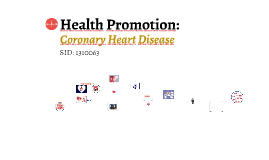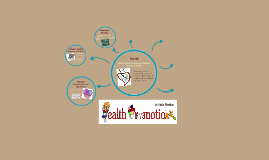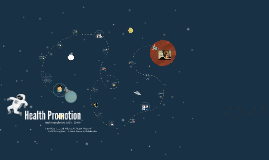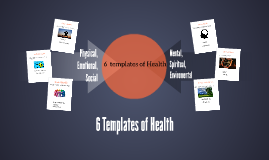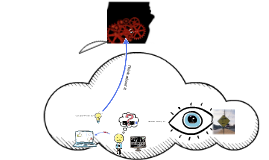Health promotion
Transcript: Australian Institute of Health and Welfare. (2011). Socio-economic disadvantage and health. Retrieved March 23, 2012, from http://www.aihw.gov.au/socio-economic-disadvantage-and-health/ Australian Institute of Health and Welfare. (2011). Socio-economic inequalities in cardiovascular disease. Retrieved March 23, 2012, from http://www.aihw.gov.au/publication-detail/?id=6442467872 Australian Institute of Health and Welfare. (2007). Health and functioning. Older Australia at a glance (4th ed.), 54-96. Australian Institute of Health and Welfare. (2007). Demographic profile. Older Australia at a glance (4th ed.), 1-8. Australian Institute of Health and Welfare. (2011). Chronic Diseases. Retrieved March 26, 2012, from http://www.aihw.gov.au/chronic-diseases/. Australian Institute of Health and Welfare. (2011). Health Priority Areas. Retrieved March 26, 2012, from http://www.aihw.gov.au/health-priority-areas/. Australian Institute of Health and Welfare. (2011). Indigenous Health. Retrieved March 22, 2012, from http://aihw.gov.au/indigenous-health/ Groene, O., Garcia-Barbero, M. (Eds.). (2005). Health promotion in hospitals: evidence and quality management. Retrieved March 22, from http://www.euro.who.int/__data/assets/pdf_file/0008/99827/E86220.pdf Health Statistics Centre, Queensland Health. (2008). Hospital Readmissions Amongst Patients with Chronic Illness. Retrieved March 16, 2012 from http://www.health.qld.gov.au/hic/statbite/statbite4.pdf Hoffman, T., McKenna, K., Herd, C., & Wearing, S. (2007). Written educational materials for stroke patients and their carers: perspectives and practices of health professionals. Topics in Stroke Rehabilitation, 14(1), 88-97. Huang, Chen, Yu, Chen & Lin. (2002). Effectiveness of health promotion education programs for community elderly. Journal of Nursing Research, 10(4), 261-269. Hurdle, D. (2001). Social support: a critical factor in women’s health and health promotion. Health and Social Work, 26(2), 72-79. International Union for Public Health Promotion and Education. (2000). The evidence of health promotion effectiveness. Retrieved March 21, 2012, from http://www.iuhpe.org/uploaded/Publications/Books_Reports/EHP_part2.pdf Johnson, A., & Baum, F. (2001). Health promoting hospitals: a typology of different organizational approaches to health promotion. Health Promotion, 16(3), 281-287. Johnson, A., Sandford, J. & Tyndall, J. (2008). Written and Verbal Information Versus Verbal Information Only for Patients Being Discharged From Acute Hospital Settings to Home (review). Retrieved March 20, 2012, from http://onlinelibrary.wiley.com.ezproxy.scu.edu.au/doi/10.1002/14651858.CD003716/abstract Mcbride & Moorwood (1994). The hospital health-promotion facilitator: an evaluation. Journal of Clinical Nursing, 3, 355-359. Queensland Government. (2012). 2011-2012 Target Delivery Plan: Chronic Disease. Retrieved March 26, 2012, from http://www.health.qld.gov.au/chronicdisease/documents/tdp_chronic_disease2.pdf World Health Organisation. (2012). Health impact assessment. Retrieved March 21, 2012, from http://www.who.int/hia/about/glos/en/index1.html World Health Organisation. (1986). Ottawa Charter for Health Promotion. Retrieved March 27, 2012, from http://www.who.int/hpr/NPH/docs/ottawa_charter_hp.pdf. Health Promotion in Gold Coast Acute Care Hospital Conclusions References Literature review Aims Current situation Current need at Gold Coast Hospital How are we addressing it? Australian health priority areas Ottawa charter Reducing health inequalities Gold Coast Hospital Outcomes met and patient and therapist surveys show effectiveness The future OTHPE role Generalisable across health setting, adult population and principles behind the packages Therapist evaluations Community feedback Outcomes Introduction Background Aims Literature review Methods Our packages Outcomes Efficacy, Sustainability and Generalisability Conclusions Recommendations Recognised need for education programs OT’S best profession to deliver Supports the use of health promotion programs with information brochures Written and verbal vs written Health promotion education with adult to elderly population within acute care Suggests willingness of patients to receive information Acute care Background research, benchmarking, collaboration, creation and evaluation of packages Group background research and Individual development of resources Need for health promotion Verbal and written information more effective Zoe Bale Sarah Paxford Rachael Walton Energy Conservation Falls Prevention Healthy Lifestyles Patient evaluations Provide education to all patients with chronic conditions within the acute ward Create resource packages for OTHPE role Link in community services for ongoing support Efficacy, Sustainability and Generalisability Background Outcomes continued Three resources have been developed They were picked as high priority by the OT’s Established need by patients and OT’s Evaluated to be useful by both OT’s and






